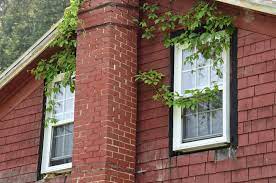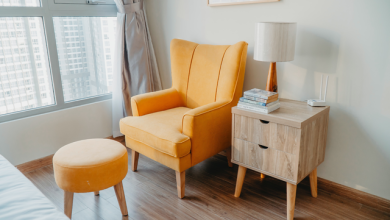How to Add Ivy to Your House Without Ruining Your Window Siding

Adding ivy to your house is a great way to add color and life to your home. Ivy is a versatile plant that can be used in many different ways. You can use it to add privacy to your yard, create a natural fence, or even decorate your home.
Ivy is a type of vine known for its ability to climb walls and other surfaces. In addition to being an attractive addition to any home, ivy can provide several benefits. For example, ivy can help to insulate a home by creating an extra layer of protection against the elements.
Ivy can also help filter pollution and noise, making it an ideal plant for city dwellers. Additionally, ivy can help to improve air quality by releasing oxygen and absorbing carbon dioxide. As a result, ivy is pleasing and beneficial for your health.
Choose the correct type of ivy.
For many of us, the thought of adding ivy to our house brings images of elegant old manors with intricately-patterned windows and stately siding. However, if you’re not careful, ivy can quickly become a problem plant, wreaking havoc on your home’s exterior.
Choosing the correct type of plant is key to successfully adding ivy to your home. English ivy, for example, is an invasive species that can cause severe damage to mortar and brickwork. On the other hand, Boston ivy is a non-invasive alternative that’s equally attractive and much easier to control.
When selecting ivy for your home, be sure to ask your local nursery for help choosing a variety that will complement your house’s style while also being easy to care for. With a little effort, you can enjoy the beauty of ivy without damaging your home.
Get your soil ready.
There are many ways to grow ivy. You can buy ivy at any garden center or propagate it from cuttings. Another way to grow ivy is to plant it in a hanging basket. This will keep the vines from damaging your home’s exterior.
Spring is the perfect time to get your hands dirty and prepare your soil for a garden. Although you can buy soil at any garden center, there are many benefits to making your own. It is more economical, but you can customize the mix to suit your plants’ needs. To make your potting soil:
- Start with a base of equal parts sand, peat moss, and perlite.
- Add organic matter such as compost or aged manure to improve drainage and help retain moisture. You can also add fertilizer to give your plants a boost.
- Mix all ingredients thoroughly for best results and test the pH level before planting. You can create the perfect environment for your plants to thrive with a little effort.
Any gardener knows ivy can be a beautiful, elegant addition to any home. Not only does it provide a splash of color, but it also helps to filter out dust and pollen from the air. However, ivy can quickly become a problem if not correctly cared for.
The vines can damage window siding, and the roots can cause cracking and damage to foundations. Therefore, it is important to take care when adding ivy to your home. One way to do this is to ensure the soil is well prepared.
Adding organic matter and ensuring that the soil is loose and well-drained can help prevent problems down the road. In addition, it is important to choose a spot that receives plenty of sunlight.
Prune your ivy
Most people think of ivy as a decorative plant that can add a touch of elegance to any home. However, ivy can also damage homes if not correctly cared for. Ivy has strong roots that can easily penetrate window siding, causing cracks and leaks. In addition, the weight of the ivy can stress the structure of your home, resulting in costly repairs.
Luckily, there is an easy way to enjoy the benefits of ivy without harming your home. Prune the ivy regularly to prevent it from growing too large or heavy. By doing this, you can enjoy the beauty of ivy without risking damage to your property.
Protect your ivy from pests and diseases
One of the most common pests is the spider mite, which feeds on the sap of the leaves. If left unchecked, spider mites can quickly destroy an entire plant. Regular dusting and cleaning of the leaves are essential to prevent them from taking hold.
Another common problem is powdery mildew, which appears as a white powder on the surface of the leaves. Although it’s not harmful to humans, it can cause the leaves to turn yellow and drop off. To control powdery mildew, water your ivy in the morning so the leaves have time to dry before nightfall. With some care, you can keep your ivy healthy and beautiful for many years.
Different types of ivy for homes
Many people think of ivy as a fast-growing plant that quickly covers walls and trellises. While this is true of some ivy varieties, many different types of ivy can be used in the landscape. English ivy is a popular choice for groundcover or climbing vines, while Algerian ivy is often used as a filler plant in gardens. Persian ivy is another type of ivy that is commonly used in landscaping. This variety of ivy has dark green leaves with white veins running through them. Ivy is also a popular choice for indoor plants. Boston and Swedish ivy are two types of ivy frequently used as houseplants. Ivy is a versatile plant that can be used in many different ways in the landscape.
Window siding experts
If you’re looking to improve the look of your home with ivy, SilverLine Exteriors can help. We specialize in installing window siding that is both beautiful and durable. We have various types of ivy to choose from, and we can help you find the right one for your home. We also offer various other services, such as roofing, gutter installation, and more. Contact us today for a free consultation!
Apart from this if you are interested to know more about How Bad Weather Impacts Your Roof then visit our Uncategorized category.





